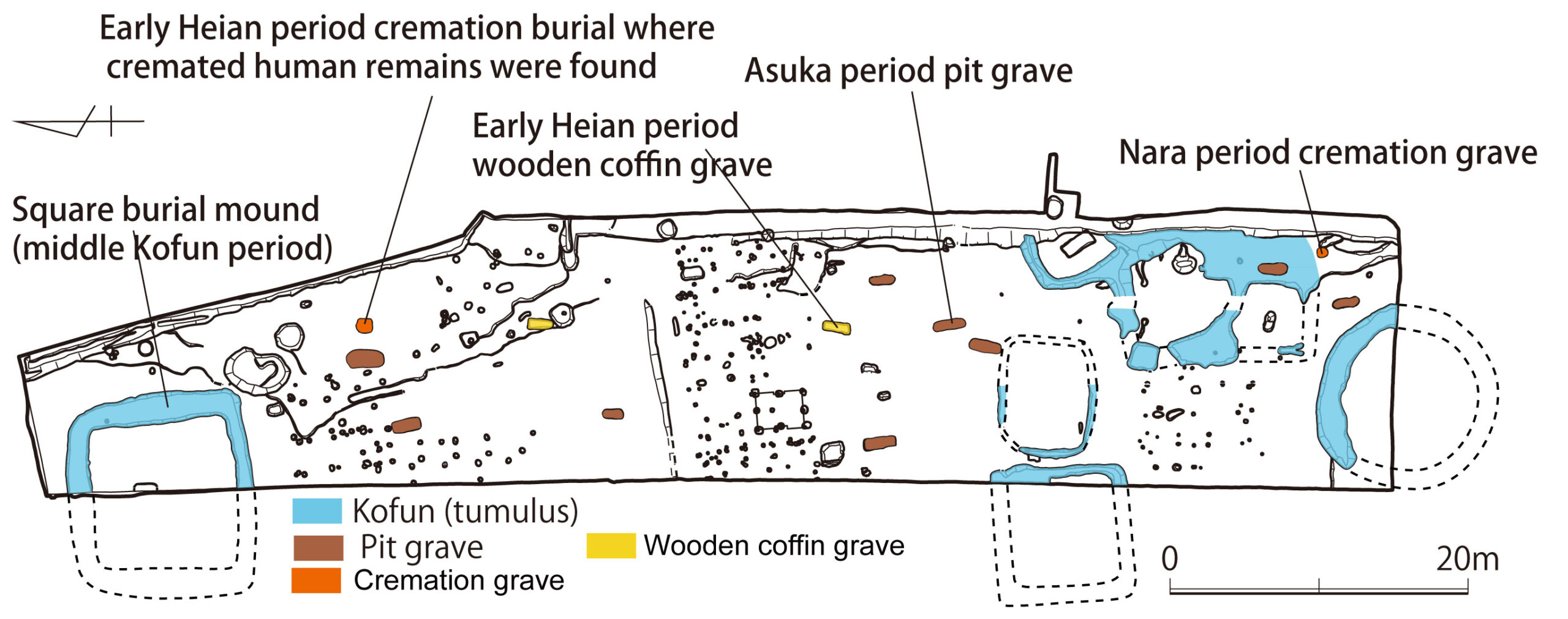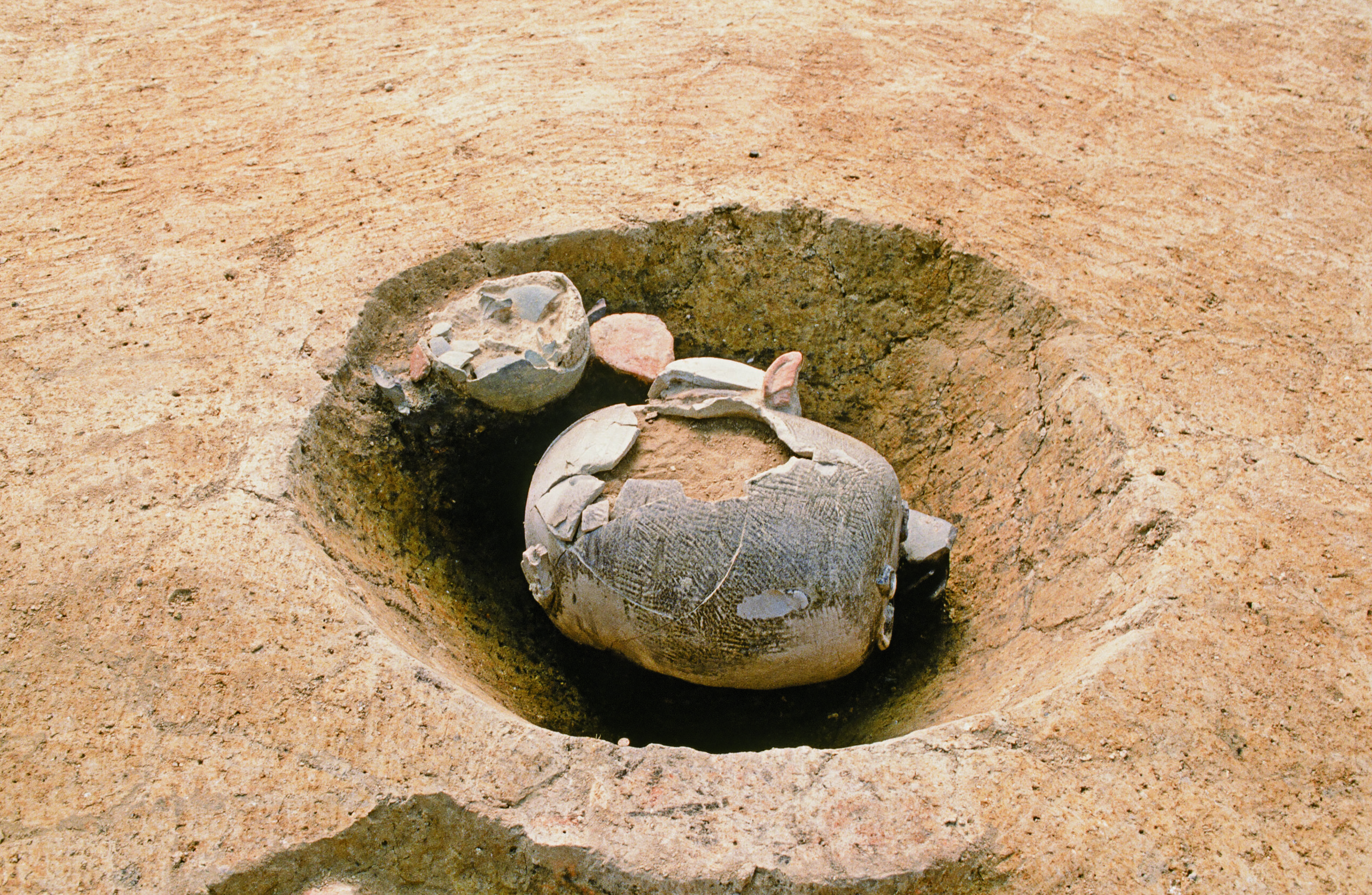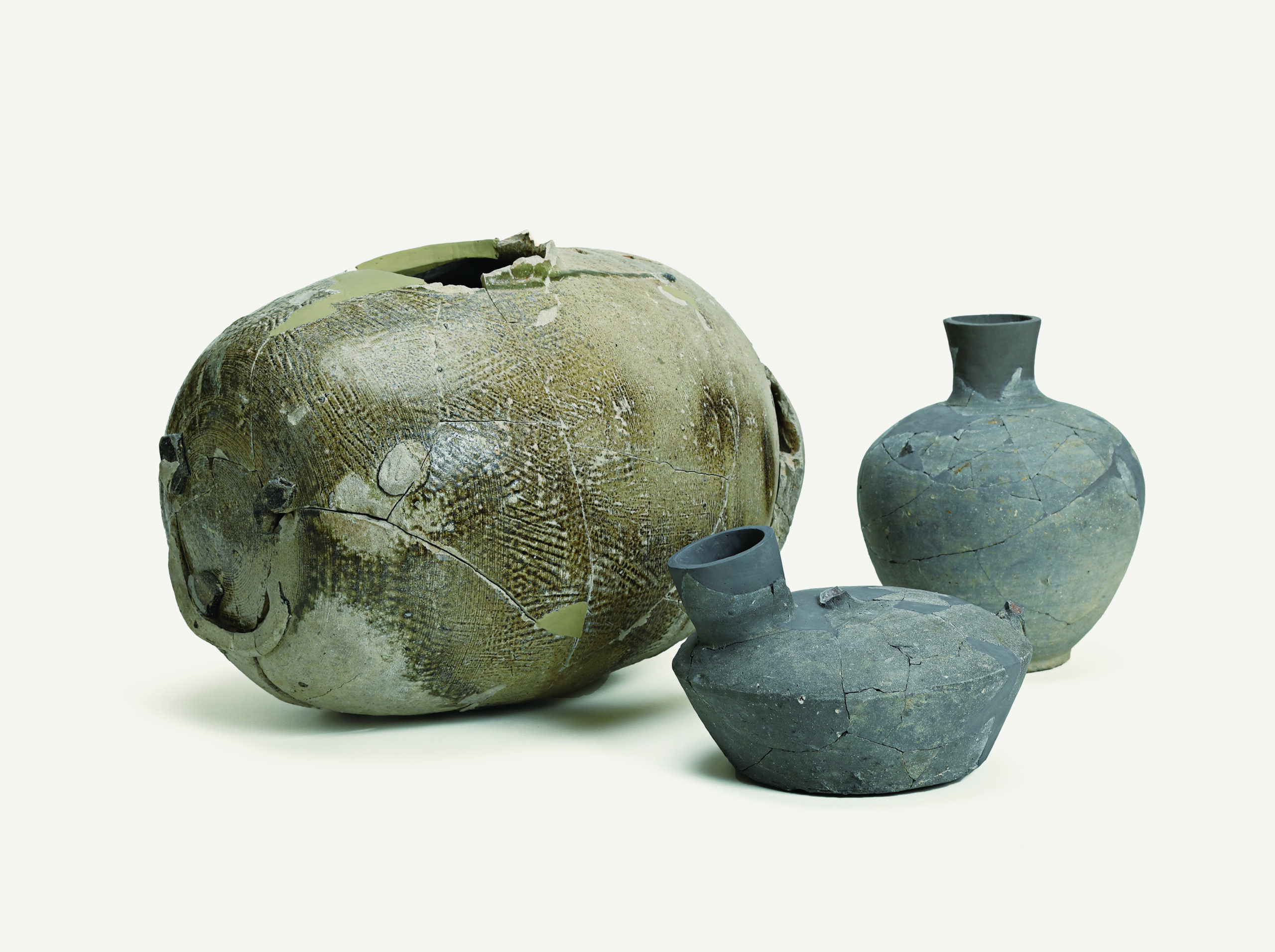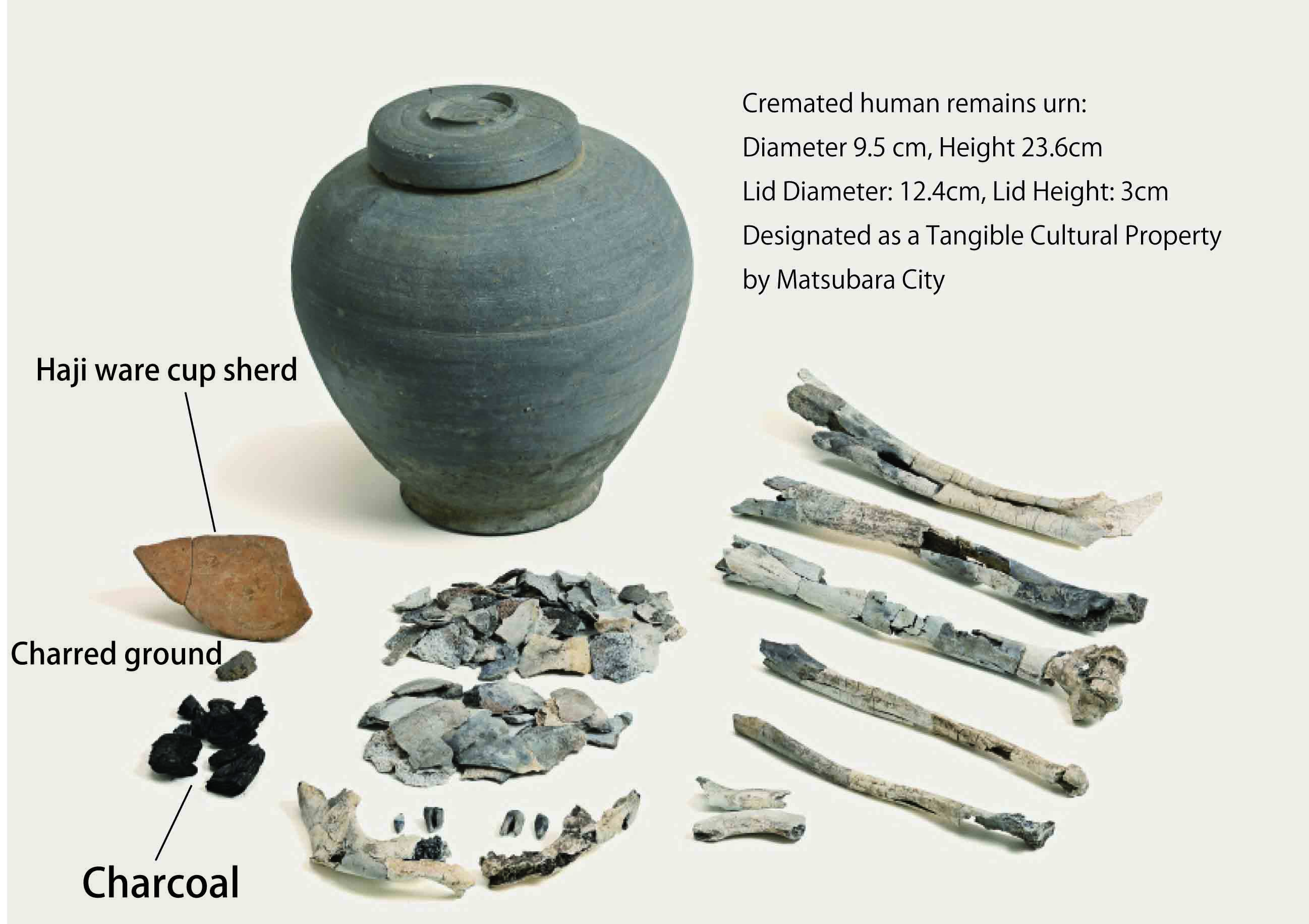Matsubara City, Ōsaka Prefecture
Mid Kofun period – Early Heian period (late 5th century – late 9th century AD)

Aerial photo of the area surrounding the survey site (as of 1942)
There is a valley within the plateau region, and there were many reservoirs that make use of this valley’s terrain. Currently, many of these have been reclaimed.

Site Layout
Detection of Kofun Tumuli and tombs from the Asuka period to the early Heian period The excavated artifacts and location of the burial mounds indicate that the tombs were maintained even after the Asuka Period

Asuka period pit grave
Three cups, a stemmed serving dish, and a Sue ware flat dish were found in the center of the north and east walls. (Grave Length: 212cm, Width: 58cm)


Nara period cremation grave
A Sue ware jar and flat jar were excavated along with a ‘yokobe’, or vessel for holding cremated human remains. The surface of the yokobe jar was cracked and the earthenware was sealed, indicating that the jar was converted from an originally defective vessel. A small number of small fragments of cremated human remains were found inside. (Jar length: 31cm; Height: 23cm)

Objects found within the cremation grave

Heian period wooden coffin grave
Iron nails were excavated from the location of the wooden coffin. A small Sue ware jar and an earthenware plate and cup (Haji ware) were found on the north side of the wooden coffin. The three Haji ware earthenware plates and cups were stacked on top of each other. The coffin was 180cm long and 62cm in width. Early Heian period. Viewed from the west.
A continuously occupied cemetery of influential local families:
Countless cremated human bones found in a funerary urn
The Tatsube Site and Tatsube Tumulus Complex are located on a plateau. The Nagao Highway runs to the north and Takenouchi Highway runs to the south; 500m to the north is the Kawachi Ōtsukayama tumulus (length: 335m), the fifth largest tumulus in Japan. In 1990, in conjunction with the construction of the municipal sports plaza facility, excavations were conducted at a location overlooking a valley within the plateau. A cemetery of a powerful local family which had been continuously used for approximately 400 years from the latter half of the Kofun Period to the early Heian Period was uncovered. In the latter half of the Kofun period, a group of burial mounds consisting of six square mounds and one round mound was created. The first tomb mound is one of the largest in this burial mound complex and has an abundance of haniwa (clay figurines). Following this, a circular burial mound of the same size was built, and after that, five smaller mounds without haniwa clay figures were built; with this, the construction of the burial mounds came to an end. The following burial mounds with known dates were constructed: one earthen pit tomb in the Asuka Period, one cremation tomb each in the Nara and early Heian Periods, and one earthen pit tomb and one wooden coffin tomb in the early Heian Period. The general burial method was earth burial, cremation, and then back to earth burial again. These ancient tombs contained the daily necessities of the deceased or certain items used in funerary rituals.
Of particular interest at this site is a grave containing cremated remains from the early Heian period (first half of the 9th century AD). Although no fill material remained, the Sue ware jar and lid buried in the center of the pit as well as the charcoal surrounding the jar remained well preserved. Where the Sue ware jar and lid was produced is unknown, but they are thought to have been produced outside the Kinai region, as their shape differs from that of typical products from the Kinai region. The jar and lid were fixed and sealed with clay, which allowed an exceptionally large number of bones to remain inside the jar; about half of a man’s body, which were preserved in the same condition as when the bones were deposited. Anthropological analysis of the cremated bones confirmed the following: 1) the bones were cremated with muscle and tendon cords intact, as seen through cracks and distortions on the bones; 2) the bones in the urn were mostly skull and limb bones, along with a few rib and other bones from the chest to abdomen area, suggesting that the bones may have been split apart; 3) no regularity was observed in the procedure for placing bones in the urn (for each bone part, etc.).
The composition of the cremated bones, the soil at the site, and the burned clay excavated from the bone implements were analyzed, and in addition to the anthropological analysis described above, it was found that: 1) the deceased was a man of mature age (40 to 59); 2) he was 158 to 160 cm tall and used his upper body frequently; 3) he consumed a relatively nutritious diet; and 4) he died around 800 A.D. and was cremated in the vicinity of the site. The use of a Sue ware urn for the funerary vessel and the fact that the area around the funerary vessel was covered with charcoal suggests that the deceased was from a powerful local family that provided low-ranking officials. Although the name of the associated clan is unknown at this time due to a lack of written records directly related to this grave; it is assumed that they were a powerful local family based in the vicinity of this site from at least the middle of the Kofun period. Thus, the Tatsube Site and Tatsube Tumulus Complex are important for elucidating the ancient burial system of powerful local families, illuminating important aspects such as the features of family cemeteries and the methods of depositing bones. (Norihide Kashinoki)
Adapted from Hakkutsu sareta Nihon rettō 2023 [Excavations in the Japanese Archipelago, 2023] (Bunkachō [Agency for Cultural Affairs], ed., Kyodo News, 2023).

